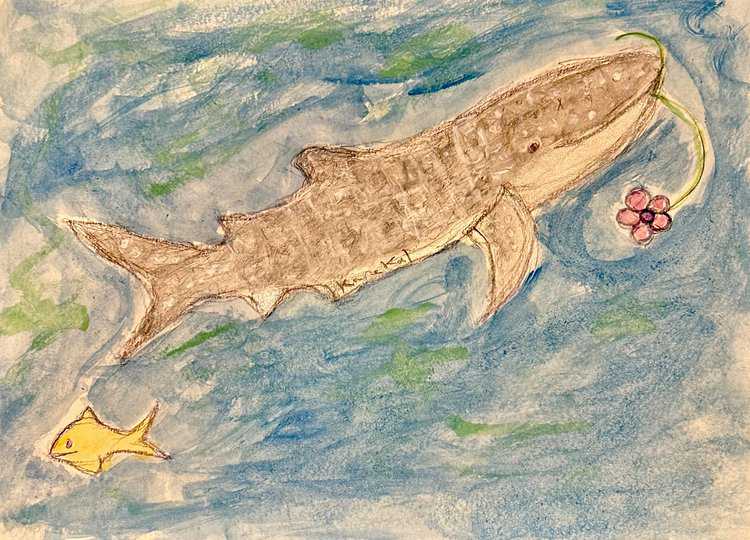Named for the unusual and distinctive form of their heads, hammerhead sharks belong to the family Sphyrnidae.
They are found worldwide, preferring life in warmer waters along coastlines and continental shelves.
“Hammerhead sharks are a monophyletic lineage of carcharhiniform sharks first appearing in the Miocene epoch,” said Florida International University researcher Cindy Gonzalez and her colleagues from the United States and Canada.
“They are characterized by their laterally expanded, dorsoventrally compressed head or ‘cephalofoil’ and currently comprise nine named species.”
“Hammerhead sharks are one of the most threatened shark families mainly due to overexploitation, with all species but one (Sphyrna gilberti) being globally listed as Vulnerable, Endangered, or Critically Endangered by the IUCN,” they added.
“There are four species of small-bodied hammerheads (less than 1.5 m total length at first maturity) that are endemic to the Americas: Sphyrna tiburo, Sphyrna tudes, Sphyrna corona, and Sphyrna media.”
“Sphyrna corona occurs only in the Eastern Pacific, Sphyrna tudes occurs only in the Western Atlantic, and two species occur in both oceanic basins, including the scoophead shark (Sphyrna media) and the bonnethead shark (Sphyrna tiburo).”
The newly-described Sphyrna species is a small hammerhead shark less than 1.5 m in length.
Scientifically named Sphyrna alleni (common name is the shovelbill shark), it has a flat, shovel shaped head that lacks indentations on its anterior edge.
“Sphyrna alleni is distinct from Sphyrna tiburo because in this species the anterior margin of the head is more rounded and the lobules on the posterior margin are not present,” the researchers said.
“Precaudal vertebral counts for Sphyrna alleni are between 80 and 83 — around 10 more vertebrae than in Sphyrna tiburo.”
“Given some similarity in cephalofoil shape in Sphyrna alleni and Sphyrna vespertina it is possible that they are sister lineages and Sphyrna tiburo diverged from them as it expanded into the subtropical and temperate Atlantic, with a later separation of Sphyrna vespertina and the incipient Sphyrna alleni by the Isthmus closure.”
Sphyrna alleni is distributed in coastal waters, estuaries, coral reefs, seagrass beds, and sand bottoms from Belize to Brazil.
The presence of the species has been confirmed in the Caribbean in Belize, Panama, Colombia, Trinidad and Tobago, and in the southwestern Atlantic in Brazil.
“Bonnetheads are currently assessed as Globally Endangered by the IUCN but they have been assessed as one amphi-American species,” the scientists said.
“The assessment highlights that the species is well managed in higher latitude parts of its northern hemisphere Atlantic range (U.S., Bahamas) but heavily fished and poorly managed elsewhere, with evidence of population collapse in Brazil and throughout much of the Tropical Eastern Pacific.”
“Reevaluating this assessment considering the geographic distribution of Sphyrna tiburo and Sphyrna alleni is now warranted,” they said.
“Given how fishing and management is distributed it is likely that the IUCN status of Sphyrna tiburo would improve and Sphyrna alleni would warrant a highly threatened status.”
“Greater management attention is necessary to rebuild populations of Sphyrna alleni, which could take the form of restrictions on gillnets and trawls as these gear types are responsible for most catches of this coastal species.”
The discovery of Sphyrna alleni is reported in a paper in the journal Zootaxa.
Citation:
Cindy Gonzalez et al. 2024. Sphyrna alleni sp. nov., a new hammerhead shark (Carcharhiniformes, Sphyrnidae) from the Caribbean and the Southwest Atlantic. Zootaxa 5512 (4): 491-511; doi: 10.11646/zootaxa.5512.4.2
This article by Natali Anderson was first published by Sci News on 4 October 2024. Lead Image: Sphyrna alleni, a male collected in Riversdale, Belize. Image credit: Cindy Gonzalez.
What you can do
Help to save wildlife by donating as little as $1 – It only takes a minute.







Leave a Reply